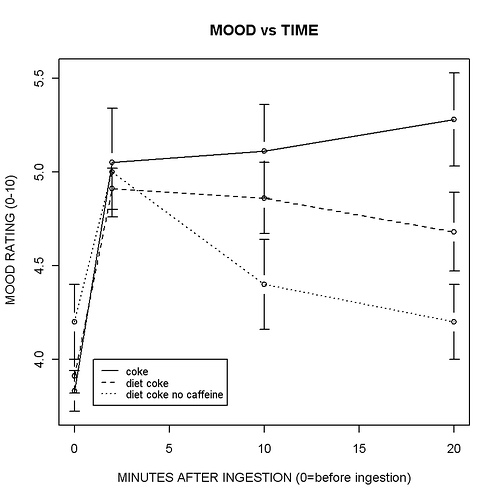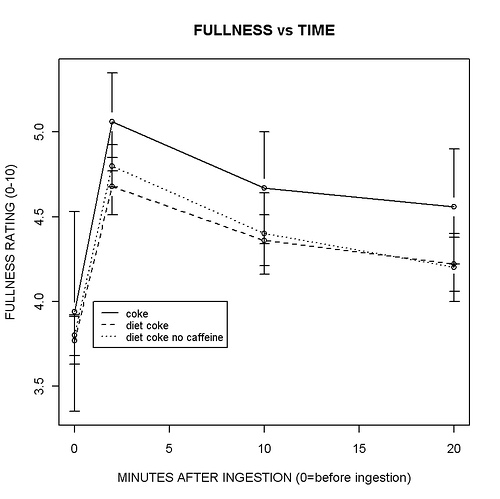Many parents have said yes. David Healy, a Scottish psychiatrist, prompted by those stories, did a small experiment in which undepressed persons took anti-depressants. About 10% of them started having suicidal thoughts. Drug companies and the University of Toronto (where Healy had been offered a job) reacted very badly to this information, as Healy describes in Let Them Eat Prozac. An article in the latest issue of the American Journal of Psychiatry by David Leon, a biostatistician on the FDA oversight panel, describes why he voted to extend a warning about this from children (< 18 years old) to young adults (18-24 years old). This was the main data:

What’s shown is the odds ratio for a report of suicide ideation or behavior, comparing those who got anti-depressants with those who got placebos. An odds ratio of more than 1 means greater risk in those who got anti-depressants. The red bar is from a different study. When different ages are lumped together there is no increase in risk but that hides opposing tendencies at high and low ages.
The article contains this curious sentence: “The results did not provide definitive evidence of risk, yet they failed to demonstrate an absolute absence of risk.” No possible results could “demonstrate an absolute absence of risk” so it is unclear what Dr. Leon meant. Later he writes: “My vote to extend the black box warning to young adults was based on concern that risk of suicidality could not be ruled out and, given the widespread antidepressant use, even a small risk must not be ignored.” Yes, he has it backwards: The data do not “fail to rule out” suicide risk (no possible data could “rule out” such risk, i.e., show the risk is zero); they manage to overcome a barrier to show it’s there. And yes, he’s congratulating himself (”even a small risk must not be ignored”) for doing his job.
Uh-oh. That someone — a biostatistician, no less — in such a powerful regulatory position fails to understand basic concepts is bad enough; to make things worse, Dr. Leon has received money from three of the companies (Eli Lilly, Organon, and Pfizer) he oversees.
Related post by Andrew Gelman.

